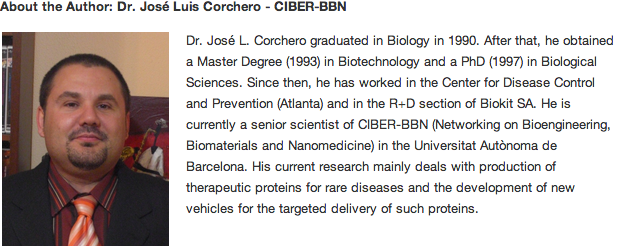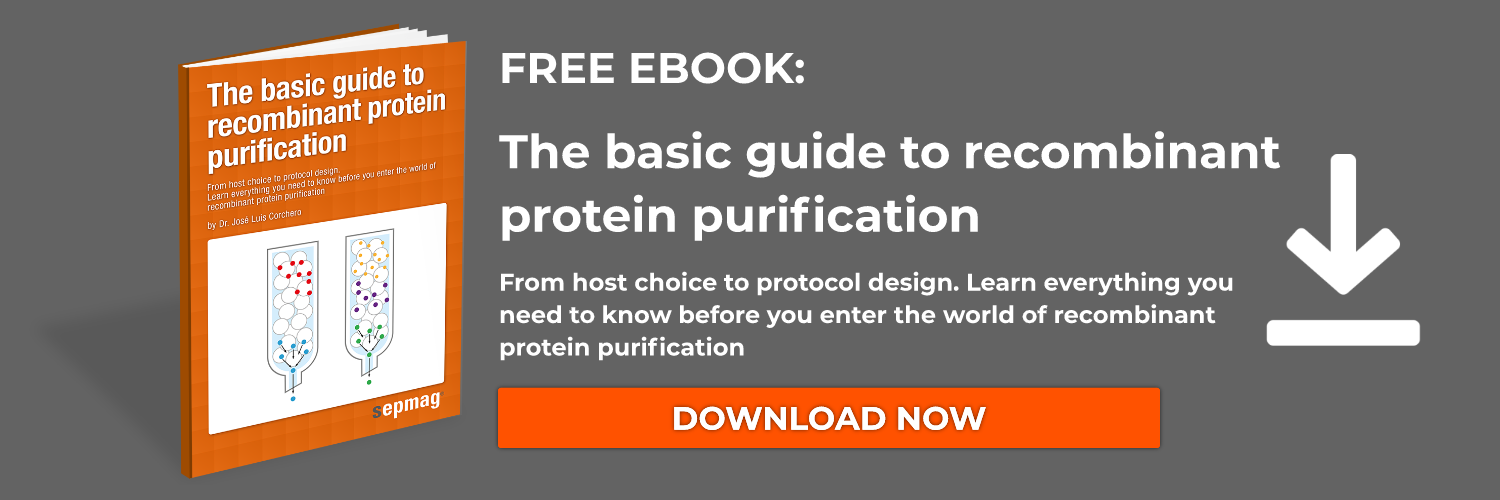As you will learn in our protein purification handbook, proteins are biomolecules of great value to humans, since they have a wide variety of uses in different sectors. They can have therapeutic (such as in insulin cases or blood clotting factors), industrial (such as the lipases that are included in detergents that degrade grease stains) or biotechnological (in the case of certain toxins that are used as pesticides) applications. They also have an extensive application in the research field, in cases when they can be used to study the molecular mechanisms of many diseases, find new drugs, or elucidate tridimensional structures, among others.
A large part of these proteins comes from higher organisms, which produce them in small quantities, making more difficult to obtain them in sufficient quantities to further studies. In order to solve this problem and to produce proteins with high added value in a cheap and simple way, we turn to recombinant proteins. Briefly, a recombinant protein is a protein that has been produced in an organism or a cell that doesn’t produce it in a natural way, which is called the host.

This post is an excerpt from our protein purification handbook, which explains the basics of recombinant protein purification. Download The Basic Guide to Recombinant Protein Purification here:
Insulin as a typical recombinant protein
A classic example of a recombinant protein is insulin, a protein produced by the pancreatic cells of a healthy person in order to regulate the levels of carbohydrates and fats in the blood. People affected by the types of insulin-dependent diabetes, however, do not produce insulin and they depend on its external intake to survive. The insulin for therapeutic purposes was originally obtained from porcine pancreatic tissue, an expensive and not very effective process. In addition, since the insulin was obtained from a non-human source, it wasn’t equivalent and its efficiency and safety were compromised.
Further advances in molecular biology enabled human insulin to be produced in bacterial cells, with Escherichia coli being the most common organism for this purpose. It was a recombinant protein that could be produced in a cheaper and safer way than the use of animals, making its industrial production more profitable.
How are recombinant proteins obtained?
All recombinant proteins are obtained by expressing a cloned (“recombinant”) gene in a cell line that is adequate due to its characteristics. Using current molecular biology techniques allows not only the introduction of the recombinant gene into the host cell but also offers the possibility to modify the recombinant gene. This is not an essential step, but provides many advantages to the entire production process.
Modifications can be introduced into the gene to obtain an improved recombinant protein, in terms of better activity, solubility or stability, for example. There is also the possibility to add to the protein a specific sequence called tag, which will allow to identify and/or purify the protein.
As we can see, the production of recombinant proteins assumes important improvements in respect to the direct extraction from their natural hosts. In addition to improving the safety and economic aspects (the expressed gene is human, and it is made in the optimal organism for its production), the possibility to modify the gene and the final properties of the protein offer many additional advantages.
Did you find this post interesting? You can check this related post in order to learn more about protein purification:






